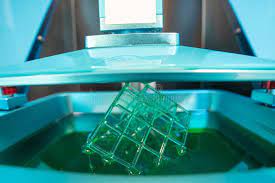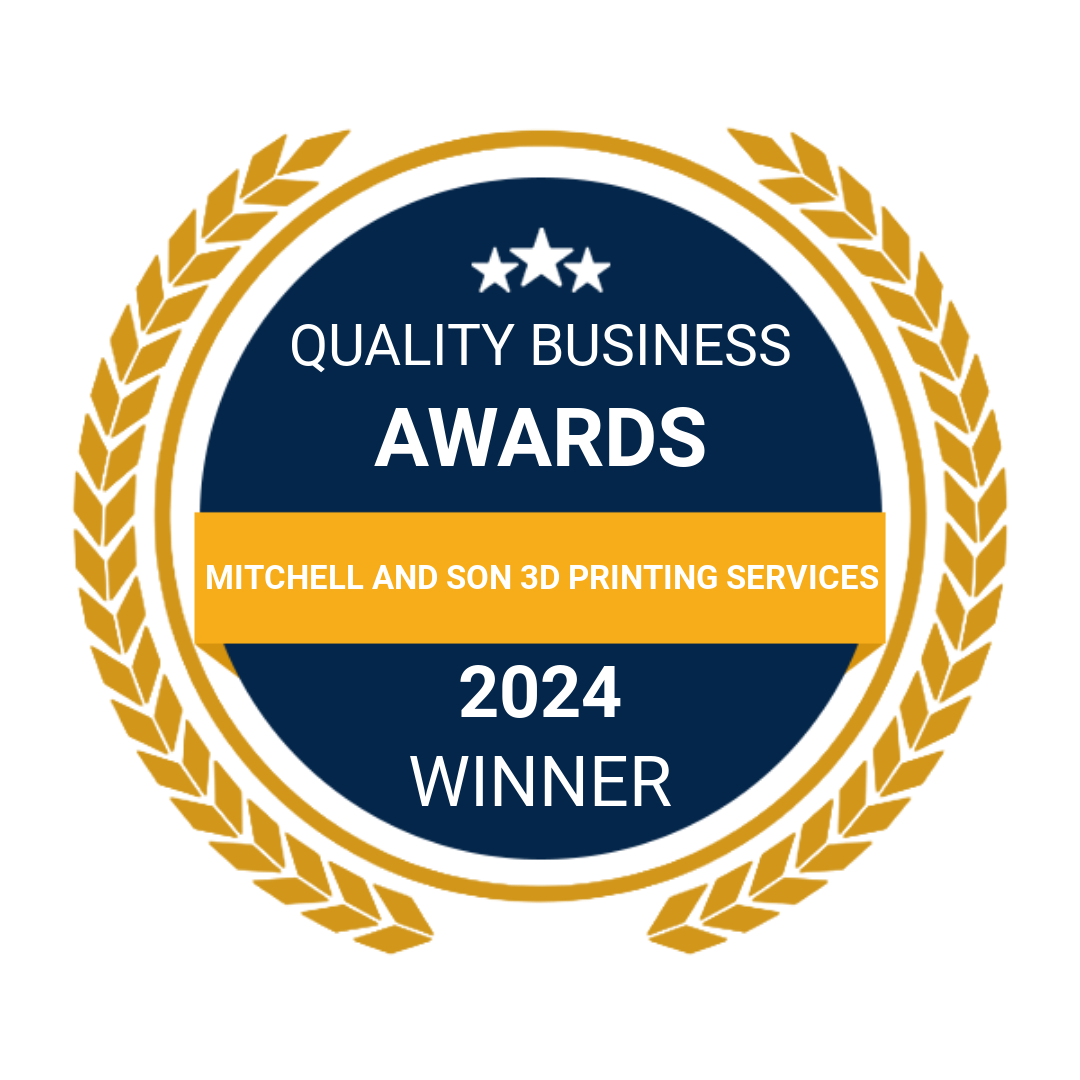RAPID PROTOTYPING & SMALL BATCH PRODUCTION
Rapid prototyping serves as an invaluable tool for businesses aiming to swiftly iterate and test their product designs, enabling them to refine concepts and identify improvements efficiently. For small batch production runs, 3D printing technologies (FDM) and (SLS) provide a cost-effective and agile solution, enabling companies to produce limited quantities of customized components or products without the need for expensive tooling or lengthy setup times
Fused Deposition Modeling
or FDM 3D Printing
FDM printers work by heating a thermoplastic filament to its melting point and then extruding it, layer by layer, to create a three dimensional object.
FDM printers are relatively inexpensive and easy to use, making them a popular choice for home and small-scale 3D printing
Stereolithography (SLA)
Stereolithography works by using a photopolymer resin that is cured by exposure to light.
The machine traces out the desired geometry layer by layer using a computer-controlled moving laser beam.
The beam is directed by mirrors that are positioned around the build platform.

CAD DESIGN & REVERSE ENGINEERING
When it comes to certain projects, a computer-aided design, or CAD, can be extremely beneficial. A main advantage to using CAD is the fact that it provides experts with greater accuracy. This is done by replacing manual drafting with electronic design software, such as SketchUp, Fusion 360, or AutoCAD Design Edition.
Vacuum Casting
Vacuum casting, sometimes referred to as urethane or polyurethane casting, uses silicone molds for making plastic and rubber parts under vacuum. This process can be used in mass production of components with high quality demands where speed is essential.
If your business requires rapid turnaround on product development, then this may well work out better than other conventional methods, such as sand moulds, because it offers greater accessibility while maintaining excellent results!
There are several steps involved in vacuum casting, but the basic principle is simple. First, a mold is created from a master model, usually using silicone. This mold is then placed in a vacuum chamber, and liquid plastic or rubber is injected into it. The vacuum pulls the material into all the nooks and crannies of the mold, ensuring that the finished product is an exact replica of the original.
The benefits of vacuum casting are numerous. As well as being quick and relatively inexpensive, it is also highly accurate, allowing for the reproduction of even the most intricate details. Vacuum casting is also very versatile, and can be used to create products in a wide range of shapes, sizes, and colors.
If you are considering using vacuum casting for your next product development project, then be sure to get in touch with a reputable supplier who can advise you on the best materials and methods for your specific needs
Vacuum casting is a versatile, yet traditional manufacturing method for creating parts with textures ranging from rigid to flexible. A 3D printed mold undergoes vacuum process that draws in the appropriate liquid material which forms into an industrial part
This technology is widely used in the industry as it is not only known for its ability to create intricate details, but also for its high mass production capabilities. This is due to the fact that it can be created through modern technology at home on site, rather than sending out product lines across oceans or continents.
One of the main advantages of vacuum casting is that it allows for a high degree of flexibility when it comes to design. This is because the 3D printed mold can be created to virtually any shape or size, and the liquid material can be drawn into it to create the desired texture.
Another advantage of this manufacturing method is that it is relatively quick and easy to set up. This is due to the fact that all that is required is a 3D printer and a vacuum chamber. Once the mold is created, the vacuum chamber will need to be sealed and the appropriate liquid material will need to be drawn into it.
The main disadvantage of vacuum casting is that it can be quite expensive. This is because the equipment required can be quite costly, and the process itself is quite time-consuming. In addition, if the mold is not created correctly, it can result in a poor quality product.
When it comes to choosing the right material for your project, there are a lot of options to consider. But with Vacuum Cast Materials, you have the ability to create parts that are more rigid, like nylon plastic or rubber. Or, you can choose something with greater flexibility, like polyurethane-based materials.
The great thing about Vacuum Cast Materials is that they can be used for a variety of applications. So, whether you need something strong and durable, or something lightweight and flexible, you can find the perfect option to suit your needs.
Plus, with Vacuum Cast Materials, you don't have to worry about warping. That's because these materials are designed to withstand heating procedures without being permanently deformed. So, you can rest assured that your parts will retain their shape and strength, no matter how much force is applied.
When it comes to creating strong, durable parts, Vacuum Cast Materials are the way to go. With a wide range of options to choose from, you can find the perfect material to suit your needs. So, why not give Vacuum Cast Materials a try? You won't be disappointed.
When it comes to Vacuum Casting, the options for materials are seemingly endless. You can choose from thermoplastics, rubbers and resins, each of which come with their own specific properties and characteristics. This versatility is what makes Vacuum Casting such a popular choice for those looking to create high-quality prototypes and products.
But with so many options available, it can be tough to know which material is right for your project. That's why we've put together this guide to help you make the best decision for your needs.
Thermoplastics are ideal for those looking for a high degree of physical appearance quality. This material is perfect for creating prototypes that need to look and feel like the real thing.
Rubbers, on the other hand, are better suited for projects that require flexibility. This material is perfect for creating products that need to be able to withstand a lot of wear and tear.
Finally, resins are perfect for those looking for a high degree of detail. This material is perfect for creating products that need to be precise and accurate.
No matter what your needs are, there's a material out there that's perfect for your project. So, don't be afraid to experiment and try out different options until you find the perfect fit.















